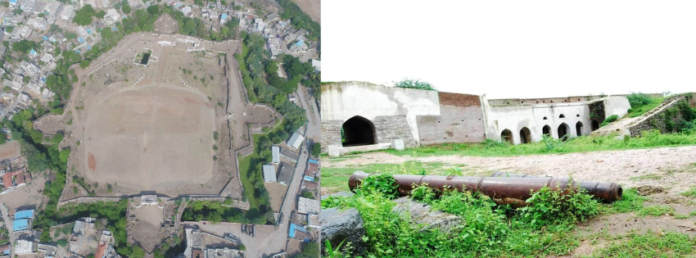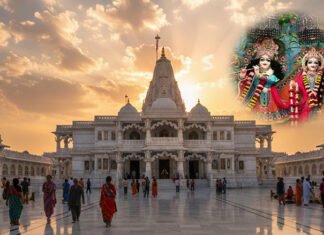Introduction:
The history of Telangana is a rich tapestry woven with threads of bravery, grandeur, and architectural brilliance. Among the many historical treasures of this region, the forts stand as enduring symbols of its opulent past. Each fort’s unique characteristics and historical significance contribute to the region’s glorious heritage. One such remarkable edifice is the Jagtial Fort, located in the town of Jagtial, in the Karimnagar district. This fort is often regarded as the shining jewel in Karimnagar’s tourism landscape, attracting history enthusiasts and travelers alike.
A Glimpse into the Past: The Origins of Jagtial Fort
The construction of the Jagtial Fort dates back to the 17th century, a period marked by architectural innovation and military strategy. The fort was conceptualized and built by two European engineers, Tal and Jack, whose expertise and vision were instrumental in creating this unique star-shaped fortress. The fort’s very name, “Jagtial,” is believed to be a fusion of the engineers‘ names, with “Jag” derived from Jack and “Tial” from Tal. This blend of European engineering with local architectural styles makes Jagtial Fort a standout structure, reflecting the influence of foreign builders in the region’s history.
Also read: Warangal Fort: An Exclusive Historical Treasure of Telangana
Architectural Marvel: The Star-Shaped Fortress
Jagtial Fort is an architectural marvel, known for its distinctive star-shaped design. The fort is strategically surrounded by a moat, which once served as a formidable defense mechanism, making it difficult for enemies to breach the fort’s walls. The design is reminiscent of European castles, with its star-shaped layout intended to provide better defense and surveillance. Despite the passage of time and the fort’s current state of partial ruin, its unique design continues to captivate visitors.
Also read: Exploring Khammam Fort a Timeless Treasure of Telangana
The fort’s construction primarily utilized lime and stone, materials that were commonly used in the region during that era. The entrance to the fort was once guarded by a massive wooden gate, which, unfortunately, has not survived the ravages of time. However, remnants of the fort’s defensive mechanisms, including large cannons, still dot the premises, offering a glimpse into the fort’s glorious past.
The Fort Today: A Ruin with Stories to Tell
Although much of Jagtial Fort now lies in ruins, its historical significance and architectural uniqueness make it an essential stop for those exploring the heritage of Telangana. The fort’s remains tell stories of a bygone era, where engineering brilliance met with the demands of defense, creating a structure that was both functional and aesthetically pleasing.
The fort’s strategic location and its design reflect the military thinking of the time, with a focus on defense and the ability to withstand sieges. The moat, now largely dry, once added a layer of security, making it nearly impossible for invaders to approach the fort without being detected.
Visitor Information: Timings and Tips
For those planning to visit Jagtial Fort, the site is open to visitors every day of the week. The fort can be explored between 08:30 AM and 05:00 PM. It is advisable to visit during the cooler parts of the day, especially in the morning, to fully appreciate the fort’s architectural features without the discomfort of the midday heat.
Also read: Udayagiri Fort, Nellore: A Historical and exclusive Architectural Marvel
Preserving a Legacy of Jagtial Fort
Efforts to preserve Jagtial Fort are crucial to maintaining its historical integrity. While much of the fort is in ruins, initiatives to protect and restore parts of the structure can help future generations connect with this remarkable piece of Telangana’s history.
In conclusion, Jagtial Fort is more than just a historical site; it is a symbol of the region’s rich past and its enduring legacy. A visit to this fort is not just a journey through time but also an opportunity to witness the confluence of European and Indian architectural traditions. Despite its current state, Jagtial Fort remains a testament to the grandeur of Telangana’s history, continuing to inspire awe and admiration in all who visit.
Near Attractions in Karimnagar:
“We’d love to hear from you! Whether you have a question, feedback, or a travel story to share, feel free to get in touch with us. Here’s how you can contact us:”
Conclusion:
Jagtial Fort is a testament to Telangana’s rich cultural and architectural heritage. Its star-shaped design, European influences, and historical significance make it a unique landmark that continues to draw the interest of history enthusiasts and travelers alike. Although time has taken its toll on the fort, its ruins still evoke a sense of wonder, offering a glimpse into the grandeur of the past. Visiting Jagtial Fort is not just an exploration of history but a journey into the heart of Telangana’s illustrious legacy. Whether you’re a history buff or a curious traveler, this fort promises an educational and inspiring experience, making it a must-visit destination in the Karimnagar district.
Frequently Asked Questions(FAQs)
Answer: The best time to visit is in the morning between 08:30 AM and 11:00 AM to avoid the midday heat.
Answer: Jagtial Fort was built in the 17th century.
Answer: The fort is known for its star-shaped design and European architectural influence.
Answer: The article does not specify an entrance fee, so it is likely free to visit.
Answer: Yes, nearby attractions include Vemulawada Raja Rajeshwara Temple, Nagunur Fort and Temples, Ujwala Park, and Deer Park in Karimnagar.











